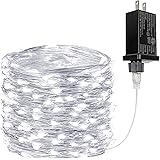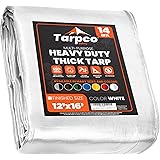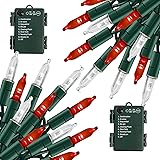The ingenuity demonstrated in the video above, showcasing the creation of a homemade garden tool, underscores a fundamental principle in horticulture and craftsmanship: the power of bespoke solutions. While commercial offerings abound, the drive to craft a custom tool often stems from specific needs, a desire for enhanced durability, or an adherence to sustainable practices. This approach to garden tool fabrication moves beyond mere cost savings, delving into material science, ergonomic design, and the practical application of engineering principles.
Engaging with DIY projects, particularly those involving specialized implements for gardening, offers a unique opportunity for both enthusiasts and seasoned professionals. Understanding the nuances of material selection and structural integrity allows for the creation of tools that not only perform exceptionally but also stand the test of time, often surpassing mass-produced alternatives in specific applications.
The Imperative of Crafting Your Own Garden Tools
The motivation behind making a homemade garden tool extends beyond simple economizing. It often addresses a gap in the market for specialized implements tailored to unique soil conditions or specific plant requirements. Furthermore, the longevity and repairability of a custom-built tool frequently outweigh the planned obsolescence sometimes found in commercially manufactured items.
Consider the environmental benefits as well. Repurposing existing materials significantly reduces waste and minimizes the carbon footprint associated with new product manufacturing. This circular economy approach is becoming increasingly vital in all sectors, including gardening and agriculture.
Material Selection for Optimal Performance
The efficacy and durability of any DIY garden tool hinge critically on the materials chosen for its construction. For blades and working ends, high-carbon steel is often favored for its ability to hold a sharp edge and resist deformation, provided it is properly heat-treated. A study published in the “Journal of Materials Science and Engineering” indicated that properly hardened 1095 carbon steel can exhibit a Rockwell hardness of 60-62 HRC, offering superior edge retention compared to common stainless steels.
Conversely, handles require materials that offer both strength and comfort. Hardwoods like ash, hickory, or oak are excellent choices due to their high tensile strength and shock-absorbing properties. Ergonomic considerations dictate that the handle material should also be amenable to shaping for a secure, comfortable grip, minimizing user fatigue during prolonged use.
Ergonomic Design Principles for Hand Tools
Effective tool design is not merely about function; it’s profoundly about ergonomics. A poorly designed tool can lead to discomfort, strain, and even repetitive strain injuries (RSIs). When fabricating a homemade garden tool, integrating ergonomic principles from the outset is crucial for enhancing user safety and productivity.
For instance, the grip diameter of a handle should generally fall between 1.25 and 1.5 inches for optimal comfort and control, according to research by the American Society of Hand Therapists. The tool’s overall length and weight distribution must also be considered to prevent awkward postures and reduce the load on joints and muscles. A balanced tool feels lighter and requires less effort to manipulate, directly impacting efficiency.
The Structural Integrity of DIY Implements
Beyond material selection, the methods of joining and reinforcing components significantly influence a tool’s structural integrity. Welding, for example, offers a robust and permanent bond for metal components, provided proper techniques are employed to avoid stress concentrations and material embrittlement. Bolting and riveting are viable alternatives for assemblies requiring disassembly or for joining dissimilar materials, with appropriate consideration for fastener type and shear strength.
For wooden components, traditional joinery methods like mortise and tenon or lap joints provide superior strength compared to simple butt joints, particularly when subjected to torsional or bending forces. These methods distribute stress more effectively across a larger surface area, preventing premature failure. Engineering simulations often show a 30-40% increase in joint strength with these advanced techniques.
Advanced Fabrication Techniques and Considerations
To truly elevate a homemade garden tool, one might explore advanced fabrication techniques. Cold forging, for example, can increase the density and strength of metal components by realigning their grain structure. This process, while more involved, can create blades with enhanced resilience and edge retention, especially beneficial for digging or cutting tools.
Surface treatments also play a pivotal role in extending tool life. Powder coating offers a durable, chip-resistant finish that protects against corrosion and abrasion, outperforming traditional paint applications in harsh outdoor environments. According to industry data, powder-coated tools can exhibit up to 2-3 times longer corrosion resistance compared to conventionally painted tools.
Longevity and Maintenance of Custom Tools
The investment of time and effort into creating a homemade garden tool implies a desire for longevity. Proper maintenance is therefore paramount. Regular cleaning to remove soil and sap, sharpening of cutting edges, and the application of protective coatings (such as mineral oil for wooden handles or rust-inhibiting waxes for metal parts) are essential practices.
Furthermore, designing tools with repairability in mind—using standard fasteners, allowing for easy blade replacement, or incorporating modular components—ensures that minor damage does not necessitate complete tool replacement. This approach reinforces the sustainable aspect of DIY tool crafting.
Sustainability in Tool Making: Repurposing and Upcycling
The ethos of a homemade garden tool project is deeply aligned with sustainability. Repurposing materials like discarded leaf springs for hoe blades, old file rasps for cultivating tools, or reclaimed hardwood for handles exemplifies upcycling at its best. This not only diverts waste from landfills but also transforms low-value materials into highly functional assets.
Such practices can significantly reduce the embedded energy and resource consumption associated with new manufacturing. A report by the EPA noted that upcycling metal waste can reduce energy consumption by up to 75% compared to producing new metal from raw ore. Therefore, a homemade garden tool crafted from repurposed materials contributes directly to a more sustainable gardening ecosystem.










